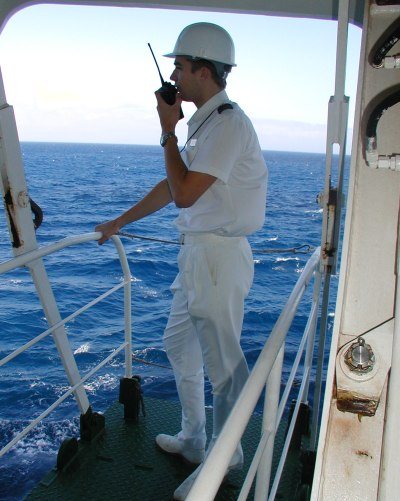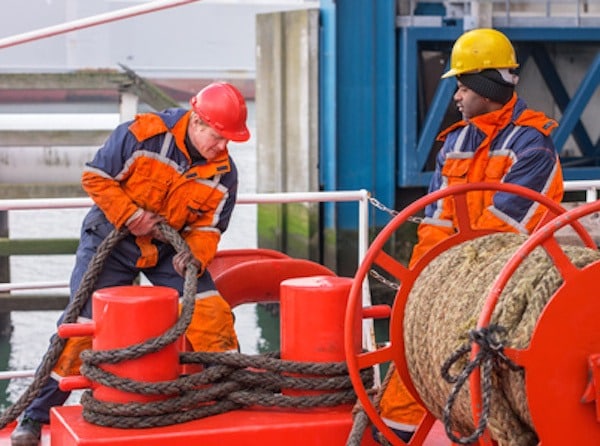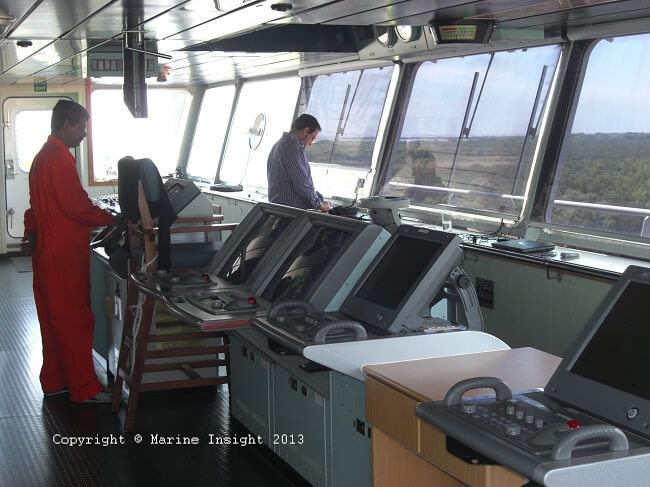

The Oxford dictionary defines the word risk as “a situation involving exposure to danger”. The word probably isn’t as clear as it is to a seafarer for it is quite established now that working on board a merchant ship is a job open to a variety of dangers.
With the rising levels of paperwork pertaining to a plethora of rules and regulations and the implementation of the ISM Code, has come around a term that is heard quite often on board- “Risk Assessment”.
Most officers generally take the term for granted, as there are probably already ten other jobs lined up on deck for him to oversee! However, such an assessment is only the first path to achieve a safe work culture wherein safety measures aren’t just put on paper but also implemented practically and with gusto.
No job can ever be valued more than human life and therefore it is important to put strict emphasis on risk assessment and its procedures.


The IMO defines risk as “The combination of the frequency and the severity of the consequence”. In other words, the governing body in shipping implies that there is
a) the probability of occurrence, and
b) the extent of the damage, if caused.
Therefore, it is a given that the officer in charge formulating and executing the risk assessment should be extremely well versed with the job at hand and the hazards as well as the preventive measures associated with it. The process of risk assessment would typically involve following stages:
1. Gathering the required data and familiarization with that data
This process involves the personnel in charge to gather all the relevant information with respect to the job against which a risk assessment is to be undertaken. For example, a ‘working aloft’ task would involve assimilating the data regarding the area where the work is to take place, the available safety equipment for working aloft, a clear appraisal of the people capable and qualified to execute the job with respectable ease, medical expertise at disposal should something go awry etc.
Familiarization would mean that the officer in charge of the risk assessment is thorough with the area of the ship where the work is to be carried out and is not a mere external assessor. Such should be considered for all the other aspects mentioned with regard to the gathering of data so that he may make the most accurate judgment of any kind of incident that may arise.
2. Identifying the hazards involved with the data at hand taking into account the practical observations
With experience and diligence on behalf of the officer, identifying the hazards would automatically involve everything which is occupational as well as that which is mechanical. Mechanical malfunction would be an unnecessary occurrence for it is something that can be easily brought under maximum possible control with prior checks and repairs.
Any equipment to be used in the job must be double checked and then checked again! When a man’s life is involved, no effort should be spared to absolutely ensure total and complete safety.
To bring into perspective, a small tear in the safety harness might seem insignificant but under suspended weight it might result in a torn harness and a lost life.


3. Analyzing the risks associated with the pending job
The IACS classifies risks into the following:
Needless to say, the risks associated with each of the above points ascend in magnitude. Actions and measures should be put in place as per the analyzed amount of danger for the job. Risks are occupational hazards that can tantamount to grave if not understood to the very basic. For example, an ‘enclosed space’ job obviously demands supreme caution and all associated risks such as that of asphyxiation, poisoning, possible flammability of gases etc. should be accounted for in the analysis.
4. Assessment of the risks involved (probability of occurrence and the extent of probable damage)
The IACS uses a term ALARP which means that the risk should be reduced to a level that is as low as reasonably possible. This is applicable to the point of risk control as well. Assessment of risks would involve that each and every practical hazard, the risks associated with them, the supervising personnel as well the controlling measures are determined with precision to a level that is achievable.
Just creating a ‘Risk Assessment’, for which is signed by the Chief Mate and the Bosun, might be documentary execution but it shouldn’t be ignored that the person performing a job dangerous to call for a risk assessment has his life in jeopardy if all the steps aren’t taken to the level of achievable precision. As a formality, the document gets filled and filed away, fulfilling company policy and other regulations; however, in practicality, it is implementation that can make or break the safety culture of work onboard.


5. Risk control, i.e., measures to prevent mishap and/or minimising the damage in case of any incident
The process of risk control would automatically become easy if the rest of the points earlier are adhered to. Vigilance on the part of the officer cannot be emphasised on more. The most important aspect of control would be to have all medical equipment on standby, which doesn’t imply a negative approach to a job but it does imply an ingrained safety culture.
All safety equipment in use for the work to be carried out must be inspected by the officer as the ones carrying out the work thoroughly. Approval to use them should be given once both sides are satisfied to its operational integrity. It is not something that demands a lot of time but its impact can decide life or death.
Essential, risk is not something that is constant, concrete and tangible. Dangers arise from the most unexpected corners and sometimes too much is not enough. However, as far as possible, the idea and practice of safety as a permanent and ingrained feature in the process of decision making and shipboard operations should be inculcated into everyone.










We believe that knowledge is power, and we’re committed to empowering our readers with the information and resources they need to succeed in the merchant navy industry.
Whether you’re looking for advice on career planning, news and analysis, or just want to connect with other aspiring merchant navy applicants, The Marine Learners is the place to be.